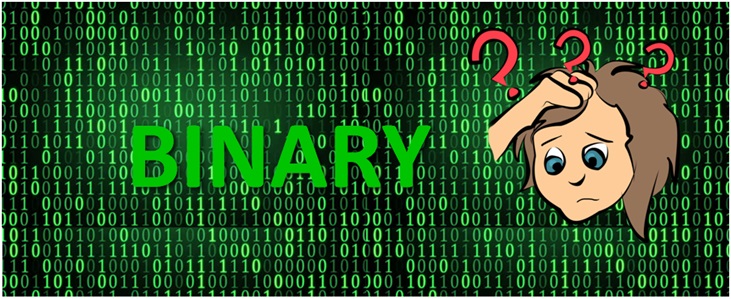
A binary number is a number which is represented in the base-2 or binary numeral scheme, which uses only two symbols: usually “0” (zero) and “1” (one). The base-2 numeral scheme is a radix-2 positional notation. A bit, or binary digit, is used to refer to each digit. Due to the binary system’s simplicity of implementation in digital electronic circuitry through logic gates, it is favoured by almost all modern computers and computer-based devices over various other human communication techniques.
Table of Contents
Brief History of Binary Numbers
Thomas Harriot, Juan Caramuel Y Lobkowitz, and Gottfried Leibniz studied the modern binary number system in Europe between the 16th and 17th centuries. However, structures based on binary numbers date all the way back to ancient Egypt, China, and India. Leibniz was influenced primarily by the Chinese I Ching. Multiplication in ancient Egypt was also closely related to binary numbers. Multiplying one number by another is accomplished by a series of steps in which a value (initially the first of the two numbers) is either doubled or has the first number reintroduced; the order in which these steps are performed is determined by the binary representation of the second number. This approach is demonstrated in the Rhind Mathematical Papyrus, which dates to approximately 1650 BC.
Representation of Binary Numbers:
Any given number can be visually or arithmetically represented by a sequence of bits (also referred to as binary digits), which can be represented by any process capable of alternating between two mutually exclusive states. In each case, the numeric value expressed is determined by the value assigned to each symbol. In the early days of computing, binary values were represented using switches, punched holes, and punched paper tapes. Numeric values may be expressed in a modern machine by two distinct voltages; on a magnetic disc, magnetic polarities may be used. A “positive,” “yes,” or “on” state is not always equal to the numeric value one; it is architecture-dependent.
Binary numbers are sometimes written using the symbols 0 and 1 in keeping with the conventional representation of numerals using Arabic numerals. When binary numerals are printed, they are often subscripted, prefixed, or suffixed to denote their root, or radix.
When binary numerals are spoken, they are usually read digit by digit to differentiate them from decimal numerals. For instance, the binary numeral 100 is pronounced one zero zero rather than one hundred in order to emphasise its binary existence and for consistency’s sake. Given that the binary number 100 reflects the value of 4, referring to the number or depicting it as one hundred would be misleading (since the word represents a completely different value, or different amount). However, the binary numeral 100 can be read as “four” (the right value), although it does not explicitly state its binary existence.
Counting in Binary
Each digit in the binary system represents an increasing power of two, with the rightmost digit denoting 20, the next denoting 21, the next denoting 22, and so on. A binary number’s value is equal to the sum of the powers of two expressed by each “1” digit. The binary number 100101, for example, is converted to decimal form as follows:
1001012 = [ ( 1 ) × 25 ] + [ ( 0 ) × 24 ] + [ ( 0 ) × 23 ] + [ ( 1 ) × 22 ] + [ ( 0 ) × 21 ] + [ ( 1 ) × 20 ]
1001012 = [ 1 × 32 ] + [ 0 × 16 ] + [ 0 × 8 ] + [ 1 × 4 ] + [ 0 × 2 ] + [ 1 × 1 ]
1001012 = 3710
Fractions in Binary Numbers
Fractions in binary arithmetic end only when the denominator contains only the prime factor 2. As a consequence, 1/10 does not have a binary representation that is finite (10 has prime factors 2 and 5). As a result, 10 0.1 does not exactly equal 1 in floating-point arithmetic. To interpret the binary expression 1/3 =.010101…, this means that 1/3 equals 0 21 + 1 22 + 0 23 + 1 24 +… = 0.3125 +… For a sum of an infinite number of inverse powers of two, an exact value cannot be found since the zeros and ones in the binary representation of 1/3 alternate forever.
Conclusion:
We have addressed briefly the Binary Numbers in this article. The modern applications of binary numbers contain extremely complex circuits and are capable of performing a wide range of tasks. There are much more complex devices, such as computers, cell phones, and portable video game consoles, but they all operate on these concepts. So, it is very important to get all the right details so as to stay yourself quite knowledgeable.
